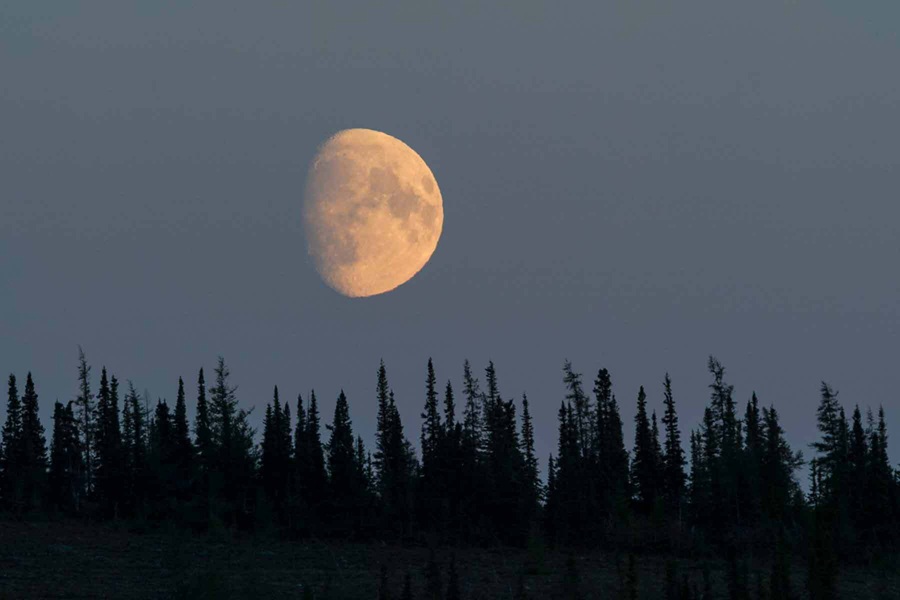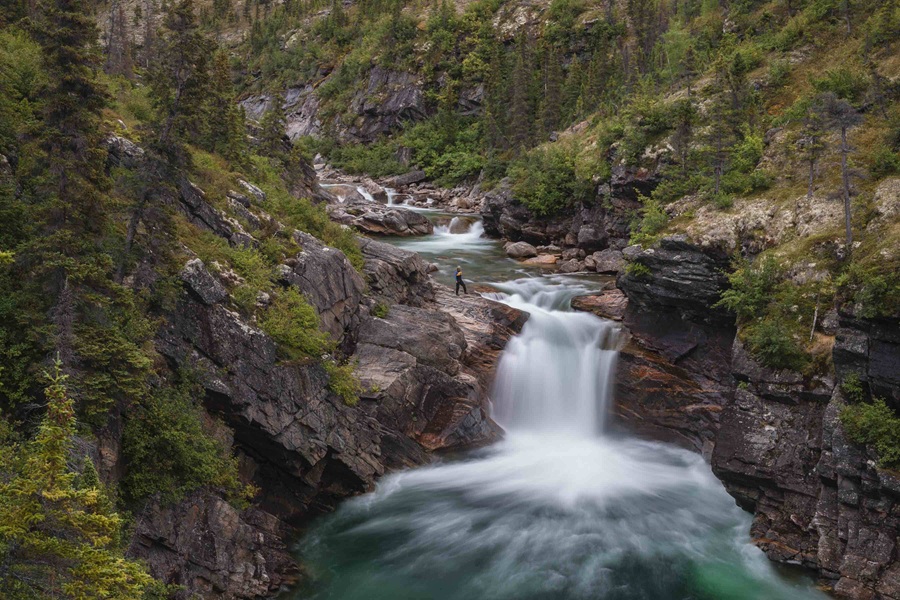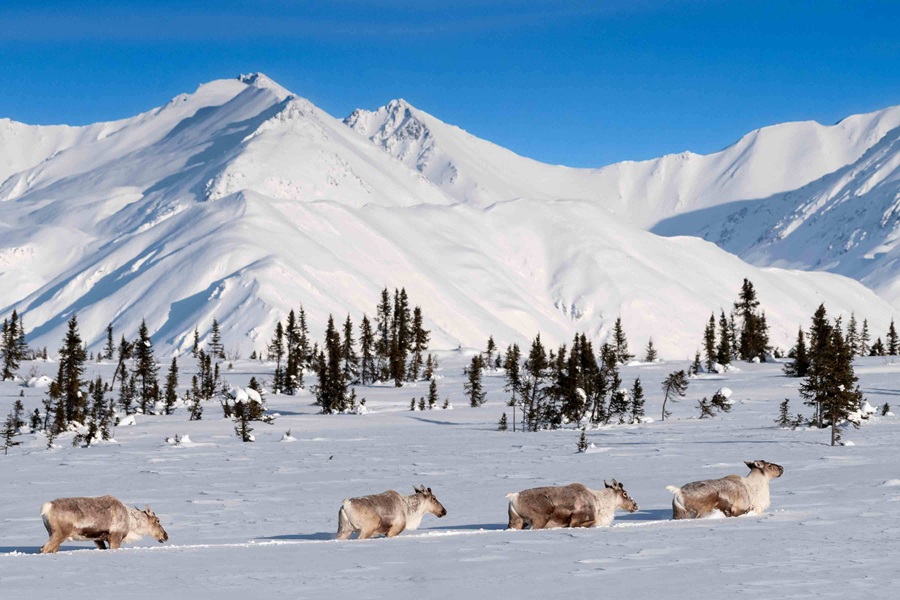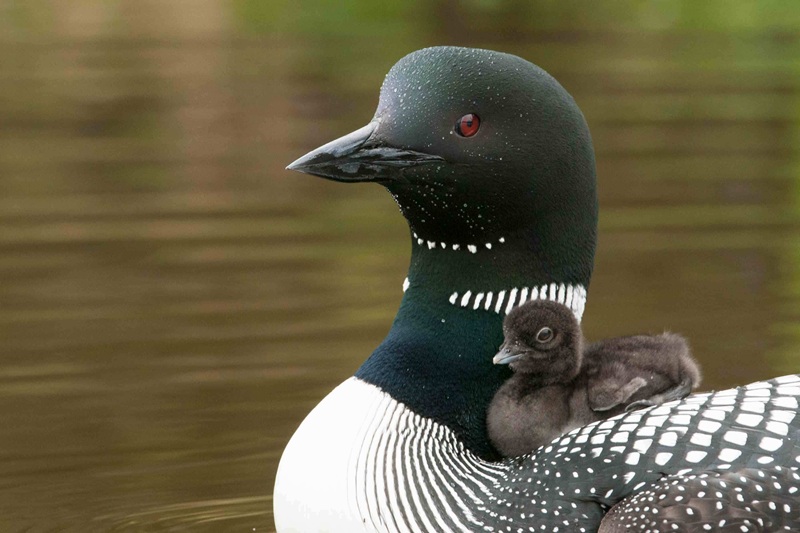Did you know the boreal forest covers 33% of the Earth’s forested area?
Home to 3.7 million people, 85 species of animals, 32,000 species of insects and 2 billion migratory birds, the boreal forest spans nearly the entire Northern Hemisphere, just below the Arctic Circle, and makes up one of the world’s last remaining stretches of true wilderness.

Discover the biodiversity and global importance of our northernmost forests through first-person stories, commissioned objects, interactive experiences and exquisite photography and videography.
The boreal forest is critical to the health of our entire planet. It helps regulate Earth’s climate, is the world’s largest land biome, is a critical water reservoir and holds two to three times as much carbon as tropical forests.
This timely bilingual exhibition (in English and Spanish) weaves together themes of climate change, Indigenous perspectives and the relationship between people and nature while taking audiences on a learning journey that starts with curiosity, builds empathy and leads to action. This family-friendly exhibition is located in The Dotty Brown Art & Nature Center and is part of PEM’s Climate + Environment Initiative.
Knowing Nature: Stories of the Boreal Forest opens July 26, 2025
SALEM, MA – This summer, the Peabody Essex Museum (PEM) invites you to explore the last remaining stretches of true wilderness. The North American boreal forest is a mega forest stretches across a third of the continent, just below the Arctic Circle and is home to 3.7 million people, 85 species of animals, 32,000 species of insects and two billion migratory birds. Knowing Nature: Stories of the Boreal Forest, developed by the Smithsonian Institution Traveling Exhibition Service, is on view at PEM from July 26 2025 through September 27, 2026.

Discover the biodiversity and global importance of our northernmost forests through first-person stories, commissioned objects, provocative interactive experiences and exquisite photography and videography. This timely bilingual exhibition (in English and Spanish) weaves together themes of climate change, Indigenous perspectives and the relationship between people and nature. Designed to be family-friendly, Knowing Nature is on view in PEM’s Dotty Brown Art & Nature Center and is presented as part of the museum’s Climate + Environment Initiative.
Follow along on social media using #PEMKnowingNature
TOP IMAGES: Scenic moonrise. Photo © Gary and Joanie McGuffin/themcguffins.ca. Courtesy of Stephen Loring, Arctic Studies Center, Smithsonian Institution. Snowshoes by John Ferris (Constance Lake First Nation). Photo by James Kegley. © Tom Walker. All Rights Reserved. Canoe by John Ferris (Constance Lake First Nation). Photo by James Kegley.
Knowing Nature: Stories of the Boreal Forest is developed by the Smithsonian Institution Traveling Exhibition Service and made possible by the National Audubon Society, with additional support from The Anders Foundation, Charlie and Nancy Hogan, and Anne C. Madison. This exhibition at PEM is made possible by Carolyn and Peter S. Lynch and The Lynch Foundation. We thank Jennifer and Andrew Borggaard, James B. and Mary Lou Hawkes, The Creighton Family, Chip and Susan Robie, Timothy T. Hilton, and an anonymous donor as supporters of the Exhibition Innovation Fund. We also recognize the generosity of the East India Marine Associates of the Peabody Essex Museum and the support and guidance of the Art & Nature Center Visiting Committee.

“Covering 33% of the Earth’s forested area, the boreal forest is the last intact forest in the world. It is critical to the health of our entire planet, yet many people have never heard of it or don’t know much about it,” said Jane Winchell, the Sarah Fraser Robbins Director of PEM’s Dotty Brown Art & Nature Center. “While seemingly vast and remote, this place is home to more than 300 Indigenous communities, whose knowledge and observations are key to understanding and protecting this environment.”
From space, the boreal forest looks like a sparkling halo of evergreens and waterways that wraps Earth’s northern latitudes and extends from Europe across Siberia, and from Alaska across Canada. As the world’s largest land biome, the forest helps regulate Earth’s climate, is a critical water reservoir and holds two to three times as much carbon as tropical forests. Additionally, it is an essential breeding ground for billions of migratory songbirds and waterfowl and home to wolves and grizzlies as well as the last great herds of barren-ground caribou.
“The Boreal — known as North America’s ‘bird nursery’ — is one of the most important places for birds in the Western Hemisphere, and the Indigenous-led efforts to protect it are key for the future of birds, people and the planet,” said Jeff Wells, Vice President of Boreal Conservation at Audubon, the exhibition’s primary sponsor.
The exhibition is organized through the seasons, presenting the forest in its four cycles of beauty and importance as a wetland region, home to migratory birds, people and other animals. Visitors will encounter first person narratives from scientists, artists and the indigenous community. Works by contemporary artists made for this exhibition to demonstrate ongoing culture from the region include Cree birchbark artwork, handmade snowshoes and contemporary jewelry plus PEM commissioned works by 2023 NEA Heritage award recipient Elizabeth James-Perry (Aquinnah Wampanoag) who engages with Northeastern Woodlands Native cultural expressions, primarily in sculptural forms ranging from quillwork to cedar bark weaving to wampum shell-carving and bead-making with its connection to identity and sovereignty, maritime traditions and restorative Native gardening. Also featured is an 1803 Wabanaki birchbark canoe model from PEM’s collection, as well as a 2022 watercolor of the boreal forest by Kristina Anderson-Teixeira.
A family activity guide, in both English and Spanish, accompanies the exhibition and interactive offerings include a migratory bird challenge, touchable works, a hands-on animal track table, and A Boreal Balance digital game, among others. An Immersive Forest Experience features an 8-channel birdsong soundscape that will put visitors right inside the forest.“We are thrilled to share the sights, sounds, textures, and stories of the boreal forest,” said Winchell.

“A learning journey that starts with curiosity, builds empathy and leads to action. We are all connected to the boreal forest and our health and wellbeing are tied to its future. The vastness, beauty, and solitude of this landscape touches something deep within us. It provides a place of hope in a changing world.
